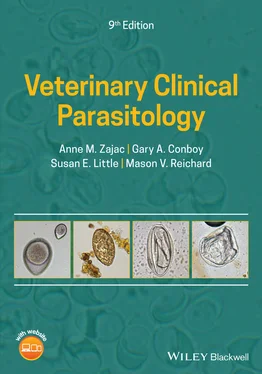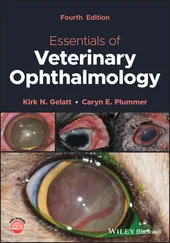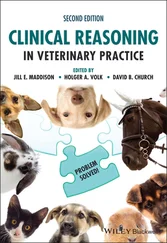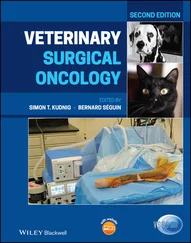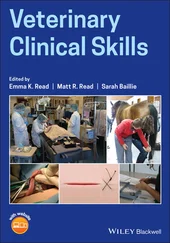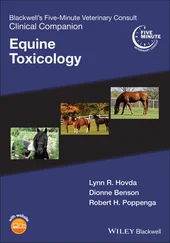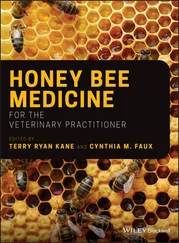1 Cover
2 Title Page
3 Copyright Page
4 Preface
5 Acknowledgments
6 Authors
7 About the Companion Website
8 CHAPTER 1: Fecal Examination for the Diagnosis of Parasitism COLLECTION OF FECAL SAMPLES STORAGE AND SHIPMENT OF FECAL SAMPLES FECAL EXAM PROCEDURES QUALITY CONTROL FOR FECAL EXAM PROCEDURES USE OF THE MICROSCOPE PSEUDOPARASITES AND SPURIOUS PARASITES IDENTIFICATION OF NEMATODE LARVAE RECOVERED WITH FECAL FLOTATION OR BAERMANN PROCEDURES TECHNIQUES FOR EVALUATION OF STRONGYLID NEMATODES IN GRAZING ANIMALS PARASITES OF DOMESTIC ANIMALS
9 CHAPTER 2: Detection of Protozoan and Helminth Parasites in the Urinary, Reproductive, and Integumentary Systems and in the EyeTECHNIQUES FOR PARASITE RECOVERY
10 CHAPTER 3: Detection of Parasites in the Blood IMMUNOLOGIC AND MOLECULAR DETECTION OF BLOOD PARASITES MICROSCOPIC EXAMINATION OF BLOOD FOR PROTOZOAN PARASITES MICROSCOPIC EXAMINATION OF BLOOD FOR NEMATODE PARASITES BLOOD PARASITES OF DOGS AND CATS BLOOD PARASITES OF LIVESTOCK AND HORSES BLOOD PARASITES OF BIRDS
11 CHAPTER 4: Immunodiagnostic and Molecular Diagnostic Tests in Veterinary Parasitology IMMUNODIAGNOSTIC METHODS IN PARASITOLOGY MOLECULAR DIAGNOSTIC METHODS IN PARASITOLOGY
12 CHAPTER 5: Diagnosis of Arthropod Parasites SUBCLASS ACARI (MITES AND TICKS) CLASS INSECTA
13 CHAPTER 6: Parasites of Fish TECHNIQUES FOR RECOVERY OF ECTOPARASITES RECOVERY OF ENDOPARASITES PARASITES OF FISH
14 CHAPTER 7: Treatment of Veterinary ParasitesINTRODUCTION ANTHELMINTICS ECTOPARASITICIDES PROTOZOAL TREATMENT NON‐TRADITIONAL TREATMENTS
15 CHAPTER 8: Diagnostic Dilemmas
16 Bibliography
17 Index
18 End User License Agreement
1 Chapter 1 Table 1.1. Approximate specific gravity of some common helminth eggs Table 1.2. Comparison of commonly used flotation solutions Table 1.3. Morphologic characteristics of infective third‐stage strongylid la...Table 1.4. Morphologic characteristics of infective third‐stage strongylid la...Table 1.5. Representative treatments for selected parasites of dogs Table 1.6. Representative treatments for selected parasites of catsTable 1.7. Representative treatments for selected parasites of ruminants and ... Table 1.8. Common Eimeria species of cattle Table 1.9. Common Eimeria species of sheep Table 1.11. Representative treatments for selected parasites of horses Table 1.12. Representative treatments for selected parasites of swine
2 Chapter 3Table 3.1. Average diameters of erythrocytesTable 3.2. Characteristics of Dirofilaria spp. and other microfilariae found in...
3 Chapter 4Table 4.1. Calculation of the diagnostic accuracy of a test (sensitivity, specifi...
4 Chapter 5Table 5.1. Microscopic characteristics of some mites important in veterinary ...
5 Chapter 7Table 7.1. Common administration routes for anthelminticsTable 7.2. Examples of withdrawal times for selected anthelminticsTable 7.3. Common administration routes for insecticides and acaricides used ...Table 7.4. Common administration routes for insecticides and acaricides used ...
1 Chapter 1 Fig. 1.1 Centrifuge tube filled with flotation solution to the top and cover... Fig. 1.2 McMaster slide used in the modified McMaster procedure for quantita... Fig. 1.3 (A) The traditional Baermann apparatus consisting of a suspended fu... Figs 1.4–1.6 The importance of small changes in the microscope focus can be ... Fig. 1.7 A typical ocular micrometer of 50 divisions. The divisions have no ... Fig. 1.8 A typical stage micrometer of 1 mm total length. Each division repr... Fig. 1.9 Appearance at 40× of an ocular micrometer being calibrated with a 1... Fig. 1.10 Examples of pseudoparasites. (A) Pine pollen is a common pseudopar... Fig. 1.11 Examples of pseudoparasites. (A) In this ovine fecal sample, both ... Fig. 1.12 Examples of pseudoparasites. (A) Insect hair from the feces of an ... Fig. 1.13 Examples of pseudoparasites. (A) Plant hairs and other fibrous mat... Fig. 1.14 Examples of pseudoparasites. (A) Free‐living mites that contaminat... Fig. 1.15 Examples of pseudoparasites. Among the most common pseudoparasites... Fig. 1.16 Spurious parasites are parasite eggs or cysts from another host th... Fig. 1.17 Examples of spurious parasites. (A) Large cyst of Monocystis , a pr... Fig. 1.18 Examples of spurious parasites. (A) Adelina sp. oocyst in a canine... Fig. 1.19 Larva detected on fecal flotation from a dog infected with lungwor... Fig. 1.20 Vaginal opening ( arrow ) of a free‐living adult female nematode rec... Fig. 1.21 Tail of an adult male free‐living nematode recovered from an impro... Fig. 1.22 Anterior end of a plant parasitic nematode recovered from an impro... Fig. 1.23 (A) Anterior end of a first‐stage larva of Strongyloides stercoral ... Fig. 1.24 Strongyloides stercoralis first‐stage larvae recovered from the fe... Fig. 1.25 Crenosoma vulpis first‐stage larva recovered from the feces of a d... Fig. 1.26 Anterior end of a first‐stage larva of a hookworm, Uncinaria steno ... Fig. 1.27 Third‐stage larvae of common small ruminant strongylid genera coll... Fig. 1.28 Trichostrongylus larva from sheep, head (A) and tail sheath (B). T... Fig. 1.29 Ovine Teladorsagia head (A) and tail sheath (B). Teladorsagia can ... Fig. 1.30 Oesophagostomum / Chabertia head (A) and tail sheath (B). The larvae... Fig. 1.31 Haemonchus head (A) and tail sheath (B). The larvae of Haemonchus ...Fig. 1.32 Cooperia from a sheep, head (A) and tail sheath (B). Cooperia thir...Fig. 1.33 Strongyloides papillosus is a nematode of ruminants that is unrela...Fig. 1.34 Third‐stage Cooperia larvae from cattle. Several species of Cooper ...Fig. 1.35 Tail sheath of Ostertagia (A) and Trichostrongylus (B). Both gener...Fig. 1.36 Tail sheath of Haemonchus (A) and Oesophagostomum (B) from cattle....Fig. 1.37 Tail sheath of Bunostomum . Species of this ruminant hookworm infec...Fig. 1.38 Infective third‐stage larvae of both large and small equine strong...Fig. 1.39 Parasites found in canine feces. Figure courtesy of Dr. Bert Strom...Fig. 1.40 Figure courtesy of Dr. Bert Stromberg and Mr. Gary Averbeck, Colle...Fig. 1.41 Dog and cat coccidia species produce oocysts of different sizes. T...Fig. 1.42 Cystoisospora oocysts usually require a minimum of 1–2 days to bec...Fig. 1.43 A sporulated Cystoisospora oocyst contains two sporocysts, each co...Fig. 1.44 Cystoisospora oocyst and two iodine‐stained Giardia cysts ( arrows )...Fig. 1.45 Cystoisospora canis oocysts in this canine fecal sample (arrows) a...Fig. 1.46 Eimeria spp. oocysts are sometimes seen in dog and cat feces. Eime ...Fig. 1.47 Neospora and Toxoplasma oocysts are similar to common Cystoisospor ...Fig. 1.48 Sarcocystis sporocysts are smaller than typical coccidia oocysts a...Fig. 1.49 Sarcocystis sporulates in the intestines and the oocyst wall usual...Fig. 1.50 Cryptosporidium sp. in a sugar flotation preparation. The oocysts ...Fig. 1.51 Trichomonad parasites in dogs and cats have a distinctive undulati...Fig. 1.52 Stained fecal smear of a trichomonad organism showing the anterior...Fig. 1.53 Giardia cysts recovered with 33% ZnSO 4centrifugal flotation. Cyst...Fig. 1.54 A drop of Lugol’s iodine may be added to a flotation preparation t...Fig. 1.55 Giardia cysts undergo osmotic damage when exposed to high specific...Fig. 1.56 The structures most often confused with Giardia
Читать дальше
